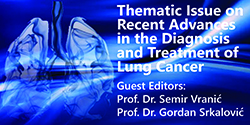Methicillin-resistant Staphylococcus aureus (MRSA) in the community – laboratory based study
Keywords:
S. aureus, MRSA, MSSA, SCCmec, Resistance, Multidrug resistance.Abstract
Objective To determine the occurrence and antibiotic resistanceof community-acquired methicillin-resistant Staphylococcusaureus (MRSA) isolates. Methods used In 2003-2005,consecutive samples of nasal, throat, eye, ear and genitourinarytract swabs, swabs of wound infections and soft and skintissue infections and samples of sputum obtained from outpatientssubmitted to the Laboratory with clinical indicationswere analyzed for the presence of Staphylococcus aureus. Thedisc diffusion method using Mueller-Hinton agar (Oxoid,Besingstoke, UK) was used to test against nine antimicrobials.Oxacillin-resistance was confirmed by E-test (AB Biodisc,Solna, Sweden). Results A total of 1583 (11.3%) nonduplicateS. aureus isolated from 13 937 samples. MRSA was detectedin 63 (4.1%) of S. aureus isolates. MRSA isolates more frequentlyfrom infected genitourinary tract and wounds thanother sites (p<0.0001). The patients in both age groups ≥65and 0-6 years of age were more frequently infected withMRSA than patients of other age groups (p=0.02). Statisticallysignificant differences in susceptibility rates betweenMSSA and MRSA isolates were found for all antibiotic tested(p=0.0053 to p<0.000). MRSA isolates were more frequentlymultidrug resistant (MDR) than MSSA isolates (p=0.0009).SCCmec type IV or V phenotype was detected in 30 (47.6%) ofMRSA isolates. Conclusion Although low MRSA prevalencewas noted, the presence of SCCmec type IV/V phenotypesin the community is of particular concern. Effective controlof dissemination of MRSA throughout the community willlikely require effective control and monitoring of nosocomialMRSA transmissionReferences
National Nosocomial Infections Surveillance (NNIS) system report, data summary from January 1992-June 2001, issued June 2001. Am J Infect Control. 2001;29:404-21.
Deresinski S. Methicillin-resistant Staphylococcus aureus: an evolutionary, epidemiologic, and therapeutic odyssey. Clin Infect Dis. 2005;40(4):562-73.
Fridkin SK, Hegeman JC, Morrison M, Thomson Sanza L, Como-Sabetti K, Jerningan JA, et al. Methicillin-resistant Staphylococcus aureus disease in three communities. N Engl J Med. 2005;352(14):1436-44.
Herold BC, Immergluck LC, Maranen MC, Lauderdale DS, Gaskin RE, Boyle-Vavra S, et all. Community-acquired methicillin-resistant Staphylococcus aureus in children with no identified predisposing risk. JAMA. 1998;279(8):593-8.
Gorak EJ, Yamada SM, Brown JD. Community-acquired methicillin-resistant Staphylococcus aureus in hospitalized adults and children without known risk factors. Clin Infect Dis. 1999;29(4):797-800.
Carleton HA, Diep BA, Charlebois ED, Sensabaugh GF, Perdreau-Remington F. Community-adapted methicillin-resistant Staphylococcus aureus (MRSA): population dynamics of an expanding community reservoir of MRSA. J Infect Dis. 2004;19 (10):1730-8.
Meree CL, Daum RS, Boyle-Vavra S, Matayoshi K, Miller LG. Community-associated methicillin-resistant Staphylococcus aureus isolates causing healthcare-associated infections. Emerg Infect Dis. 2007;13(2):236-42.
Klutymans-VandenGergh MFQ, Kluymans JAJW. Comminity-acquired MRSA: current prospectives. Clin Microbiol Infect. 2006;12(suppl 1):9-15.
Folden DV, Machayya JA, Sahmoun AE, Beal JR, Holzman GS, Helgerson SD, et al. Estimating the proportion of community-associated methicillinresistant Staphylococcus aureus: two definitions used in the USA yield dramatically different estimates. J Hosp Infect. 2005;60(4):329-32.
Salgado CD, Farr BM, Calfee DP. Community-acquired methicillin-resistant Staphylococcus aureus: a meta-analysis of prevalence and risk factors. Clin Infect Dis. 2003;36(2):131-9.
Groom AV, Wolsey DH, Naimi TS, Smith K, Johnson S, Boxrud D, et al. Community-acquired methicillin-resistant Staphylococcus aureus in a rural American Indian community. JAMA. 2001;286(10):1201-5.
Sattler CA, Mason EO, Kaplan SL. Prospective comparison of risk factors and demographic and clinical characteristics of community-acquired, methicillin-resistant versus methicillin-susceptible Staphylococcus aures infection in children. Pediatr Infect Dis J. 2002;21(10):910-7.
Ito T, Katayama Y, Asada K, Mori N, Tsutsumimoto K, Tiensasitorn C, et al. Structural comparison of three types of staphylococcal cassette chromosome mec integrated in the chromosome in methicillin-resistant Staphylococcus aureus. Antimicrob Agents Chemother. 2001;45:1323-36.
Robinson DA, Enright C. Evolutionary models of the emergence of methicillin-resistant Staphylococcus aureus. Antimicrob Agents Chemother. 2003;47(12):3926-34.
Clinical and Laboratory Standards Institute. Performance standards for antimicrobial susceptibility testing. 15th informational supplement. CLSI/NCCLS document M100-S15. Clinical and Laboratory Standards Institute, Wayne, PA, USA, 2005.
Diekema DJ, Pfaller MA, Schmitz FJ, Smayevsky J, Bell J, Jones RN et al. Survey of infections due to Staphylococcus species: frequency of occurrence and antimicrobial susceptibility of isolates collected in the United States, Canada, Latin America, Europe, and Western Pacific region for SENTRY Antimicrobial Surveillance Program, 1997-1999.
Clin Infect Dis. 2001;32 (suppl 2):S114-S32.
Peacock SJ, de Silva I, Lowy FD. What determines nasal carriage of Staphylococcus aureus? Trends Microbiol. 2001;9(12):605-10.
Kuehnert MJ, Kruszon-Moran D, Hill HA, Mc- Quillan G, McAllister SK, Fosheim G, et al. Prevalence of Staphylococcus aureus nasal colonization in the United States, 2001-2002. J Infect Dis. 2006;193(2):172-9.
Sá-Leão R, Sanches IS, Couto I, Alves CR, de Lencastre H. Low prevalence of methicillin-resistant strains among Staphylococcus aureus colonizing young and healthy members of the community in Portugal. Microb Drug Resist. 2001;7(3):237-45.
Moreno F, Crisp C, Jorgensen JH, Patterson JE. Methicillin-resistant Staphylococcus aureus as a community organism. Clin Infect Dis. 1996;23 (4):851-2.
Jones TF, Kellum ME, Porter SS, Bell M, Schaffner W. An outbreak of community-acquired food borne illness caused by methicillin-resistant Staphylococcus aureus. Emerg Infect Dis. 2002;8 (1): 82-4.
Coronado VG, Edwards JR, Culver DH, Gaynes RP. Ciprofloxacin resistance among nosocomial Pseudomonas aeruginosa and Staphylococcus aureus in the United States. National Nosocomial Infections Surveillance (NNIS) System. Infect Control Hosp Epidemiol. 1995;16(2):71-5.
Goering R, Nord C-E, Hare R, Sabatelli and the Ziracin Susceptibility Testing Group. In vitro activity of evernamicin and selected antibiotics against methicillin-resistant staphylococci: a 24-country study. Clin Microbiol Infect. 2000;6(10):549-56.
Weber SG, Gold HS, Hooper DC, Karchmer AW, Carmeli Y. Fluoroquinolones and the risk for methicillin-resistant Staphylococcus aureus in hospitalized patients. Emerg Infect Dis. 2003;9(11):1415-22.
de Neeling AJ, van Leeuwen WJ, Schouls LM, Schot CS, van Veen-Rutgers A, Beunders AJ et al. Resistance of staphylococci in the Netherlands: surveillance by an electronic network during 1989-1995. J Antimicrob Chemother. 1998;41(1):93-101.






